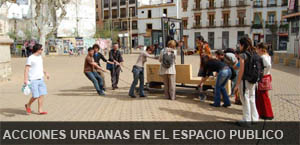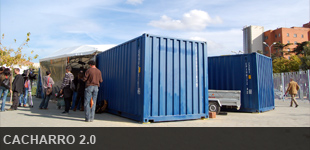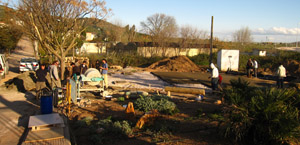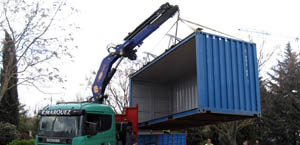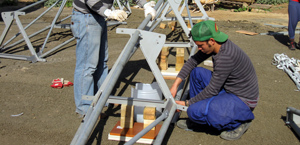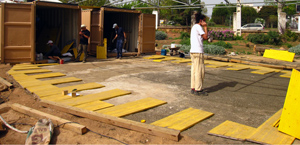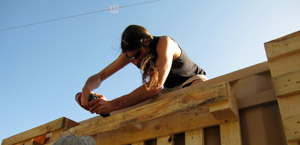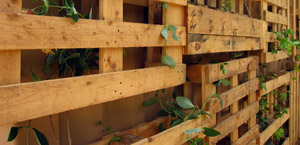>>>>>>>
HortoLAB – Creative space – Cáceres España
ATTENTION: THIS PROJECT IS THE RESULT OF A COLLABORATIVE PROCESS BETWEEN CTRL+Z AND DIFFERENT ACTORS. TO UNDERSTAND IT CORRECTLY I INVITE YOU TO GET CLOSE TO THE OTHER DIRECTLY INVOLVED SUBJECTS: PROYECTO ASILO (CASTUERA), STRADDLE3 (BARCELONA), TODO POR LA PRAXIS (MADRID).
The experience of HortoLAB don’t start from zero, but is based on the reuse of the “Mobile Architecture Prototype for Collective Activities” built in 2009 during the “Congreso de Ciudades Creativas” of Caceres.
In November 2009 I had the opportunity to participate with other groups in the assembly of prototype Chacharro2.0 a mobile equipment devised by Straddle3 for the “Ciudades Creativas” event.
Those interested can find the complete information on this first phase on this link: C2.0
From this constructive experience, in March 2011 arises, always through the initiative of Stradlle3, the possibility of recycling the Cacharro2.0 to configure HortoLAB a new equipment dedicated to promote respect for the environment and healthier consumer habits between population, especially younger ones, at service and support for neighborhood gardens of San Jorge in Caceres.
The project take place in the mark of several multidisciplinary experiments that are being implemented in the Ribera del Marco’s context, to promote and support local policies for innovation and creativity. Ctrl + Z immediately join the project in which also collaborate Proyecto Asilo y Todo por la Praxis.
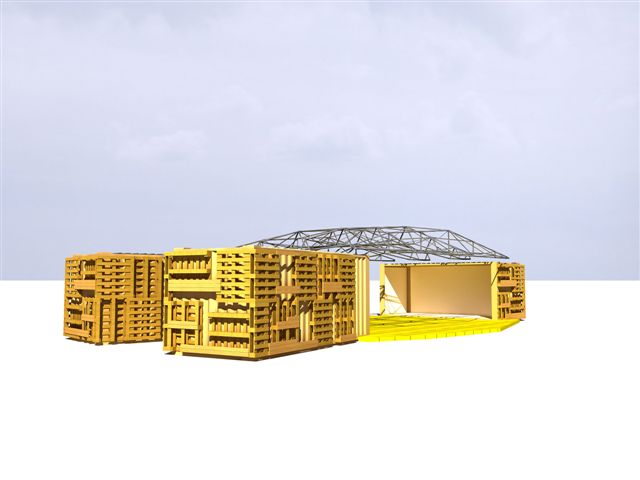 The equipment consists of a seedbed for educational activities, a kitchen, for handling products of the orchard itself, plus an office for administrative tasks and is built around a central space that in case of need can be extended opening completely into the garden to allow greater capacity or, rather, different activities that require this dual nature of open and closed space.
The equipment consists of a seedbed for educational activities, a kitchen, for handling products of the orchard itself, plus an office for administrative tasks and is built around a central space that in case of need can be extended opening completely into the garden to allow greater capacity or, rather, different activities that require this dual nature of open and closed space.
This second tuning incorporates passive and natural systems of isolation, focused mainly to avoid direct sunlight exposure of the containers, a major Achilles heel of projects based on this type of element.
The exterior walls propose a ventilated façade based on the reuse of pallets that have been modified and turned into planters, this way from the beginning a good partial protection is available and will be completed as the plants grow. For this purpose some rapid growth climbing species have been selected.
The container’s roof has been transformed into a green surface resting on recycled plastic molds that separate the earth from the metal sheet, to avoid leaks and implement an air chamber. The mass will help maintain temperature control in both summer and winter, in this case, to promote a more autonomous maintenance, local shrub species were chosen.
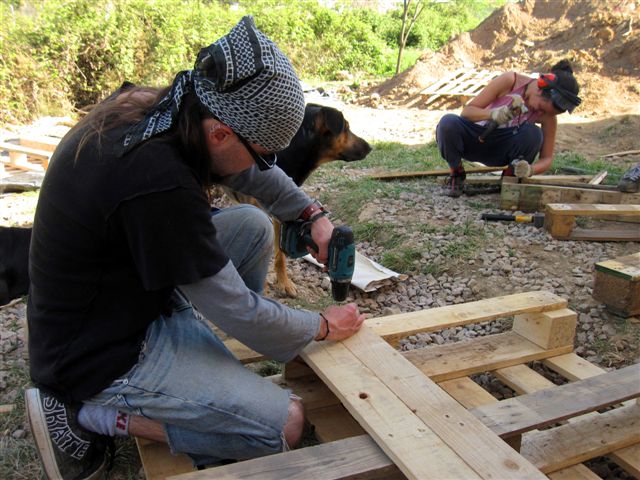 Both are effective solutions for maintaining a reasonable temperature inside without active meanings.
Both are effective solutions for maintaining a reasonable temperature inside without active meanings.
Inside the kitchen and the office have been isolated and clad with plasterboard for major comfort, while for the seedbed we used wood panels as they are most suitable for intensive uses.
The central floor, comprising formwork panels, have been recuperated from the previous assemblage as well as the top metal structure and canvas to which only minor repairs were made.
The use of recycled and standard materials answers to the vocation that the proposed models results familiar for the population and would be reproducible as they are easy to find and practitioner alike, not only in Spain but throughout the world.
During the process the local junkyards has been visited several times and there we recovered various items such as sinks, plenty of metal profiles, and windows.
The equipment is designed with a dual mission:
On one hand its markedly didactic nature can accommodate receive local children and young people, even whole classes, to bring them in contact with environmental and ecological issues, from germination to the preparation of the orchard ‘s products, being able to live the full experience of the natural cycle. While allowing the development of complementary activities such as mobile gardens construction, sensory education laboratory, etc…
Furthermore the HortoLAB is a new opportunity for citizens to participate in self-management of a space that invites to groups, associations and ordinary citizens to organize themselves, to share responsibility and its use.
Coinciding with the summer solstice HortoLAB has organized the “1º HortoLAB Week” dedicated to innovation applied to urban agriculture, with all kinds of workshops, covering a broad spectrum of different topics, with a strong vocation for integrating the community surrounding the equipment.
I invite you to visit HortoLAB‘s webpage where you’ll find a full schedule of upcoming activities.

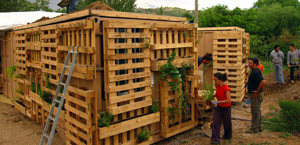

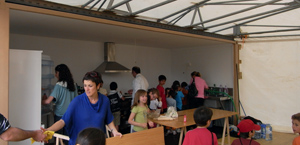
Involved with different contribution in the assembly:
Straddle3 (Catarina Eisele, Rita Rabaça, Jordi Pastells, David Orriols, David Juarez), Proyecto aSilo (Jose Milara, Joaquín “el zapatero” y el equipo frijól: Guillermo Valles, Oscar Pinales, Orlando Parras), Manuel Torralba, Txp (Diego Peris, Sebastián Rueda, Orlando Rueda, Manu “el de la gorra”, Laura Gonzalez), the guys from Concetpuarte (Pedro, Nacho y Ciro), some meridians and of course Ctrl+Z (Gianluca Stasi).
Special thanks to Mrs. Tonia for having stocked us with “perrunillas” and buns during the assembly.
![]()
